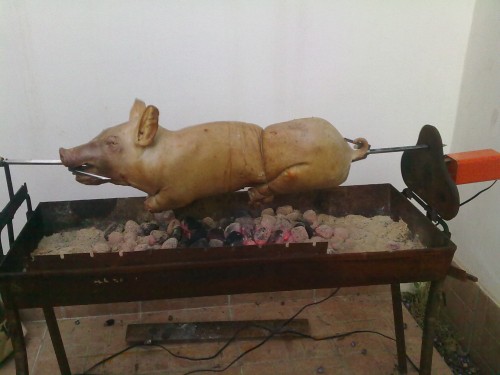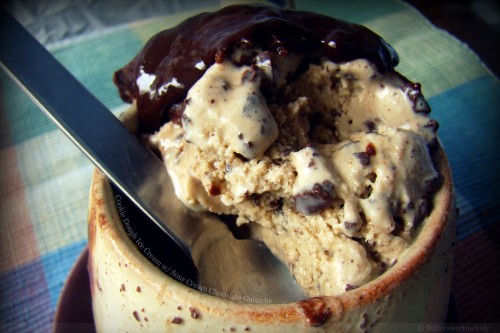Cooking and eating a whole suckling pig has been a dream of mine for a few years now. Not just me – it was a dream that I shared with a very good friend of mine. Yesterday it finally came true. My friend decided that we’ve waited enough and that we should finally do it. So he got the pig and invited me over (as well as a few other people).

We soon discovered that cooking this thing was not as easy as we imagined. For one, it seemed that the pig was too heavy for the motor to rotate it. A new motor, more powerful, was bought. But it still it didn’t work. Luckily, almost everyone at a party was an engineer in one sense or another. So we figured out that the pig had to be re-adjusted, for better balance. It took us a couple of tries and a few meters of metal wire, but we managed to set it perfectly. Too bad it was still too heavy for the motor and it simply died. Gladly, we had more motors that finished the job.
One other thing we had to re-adjust was timing. Somehow we thought it would be somewhere around two hours to cook it. But finally it took more than four. I know there is some formula to calculate the time based on weight of th meat, but nobody seemed to knew it. Not to worry though – we had plenty of beer and things to talk about.
When the pig was finally cooked, put on table, and tried, I realized that all the wait was definitely worth it. It was one of the best dishes I ate ever. And it was the best pork ever. So soft and so tender, it was unbelievable!
Now that we tried it and realized that it’s even better than we expected it to be, something tells me we’ll do it again. With more preparations and better understanding of the process. And even though I’m still digesting it, I can’t wait for that next time. And if you never tried a suckling pig, I can’t recommend it enough. It’s one of those things everyone just have to try. Yes, it was really that good.


